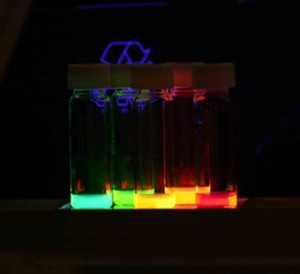Nov
19
Progress On the Path to Harvesting Heat
November 19, 2009 | 2 Comments
Starting from scratch, without trying to improve existing technology MIT’s Associate Professor of Electrical Engineering Peter Hagelstein and graduate student Dennis Wu aimed to find how close realistic technology could come to achieving the theoretical limits for the efficiency of harvesting waste heat energy.
Hagelstein says, “There’s a gold mine in waste heat, if you could convert it. A lot of heat is generated to go places, and a lot is lost. If you could recover that, your transportation technology is going to work better. There’s no reason, in principle, you couldn’t get another order of magnitude or more improvement in throughput power, as well as an improvement in efficiency.”
Now the gold mine analogy is a truth, but Hagelstein is leaving out massive stores of heat or thermal power, from electrical power stations, industrial furnaces and others. The amount of heat released could equal as much as 75 percent, or three times more energy could optimally be available than what is being put to work now. A breakthrough at reasonable cost could triple the available energy for people to use. Harvesting the energy in lost heat would set up decades of energy abundance for the future.
Successful technology would also relieve the expense of getting rid of excess heat. Imagine an air conditioner that delivered power to the grid instead of drawing from it. The potential is just stunning.
As part of Wu’s doctoral thesis the pair aimed to find how close realistic technology could come to achieving the theoretical limits for the efficiency of such conversion. When this work began around 2002, Hagelstein says, such devices “clearly could not be built. We started this as purely a theoretical exercise.” But developments since then have brought it much closer to reality.
Theory says that such energy conversion can never exceed a specific value called the Carnot Limit, based on Carnot’s 19th-century formula for determining the maximum efficiency that any device can achieve in converting heat into work. Current commercial thermoelectric devices only achieve about one-tenth of that limit.
In experiments involving a different new technology, thermal diodes, Hagelstein worked with Yan Kucherov, who is now a consultant for the Naval Research Laboratory, and other coworkers to demonstrate efficiencies as high as 40 percent of the Carnot Limit. The team’s calculations show that this new kind of system could ultimately reach as much as 90 percent of that ceiling.
Hagelstein’s team carried out their analysis using a very simple system in which power was generated by a single quantum-dot device — a type of semiconductor in which the electrons and holes, which carry the electrical charges in the device, are very tightly confined in all three dimensions. By controlling all aspects of the device, they hoped to better understand how to design the ideal thermal-to-electric converter.
A key to the improved throughput was reducing the separation between the hot surface and the conversion device. A recent paper by MIT professor Gang Chen reported in an analysis showing that heat transfer could take place between very closely spaced surfaces at a rate that is orders of magnitude higher than predicted by theory. The new report takes that finding a step further, showing how the heat can not only be transferred, but also converted into electricity so that it can be harnessed.
Hagelstein says that with present systems it’s possible to efficiently convert heat into electricity, but with very little power. It’s also possible to get plenty of electrical power, what is known as high-throughput power, from a less efficient, and therefore larger and more expensive system. “It’s a tradeoff. You either get high efficiency or high throughput,” says Hagelstein. But the team found that using their new system, it would be possible to get both at once, he says.
The team’s paper has appeared in the Journal of Applied Physics 106, November 13, 2009 / DOI:10.1063/1.3257402
Hagelstein says a company called MTPV Corp. (for Micron-gap Thermal Photo-Voltaics), founded by Robert DiMatteo, is already working on the development of, “a new technology closely related to the work described in this paper.”
DiMatteo says the work described in this paper “is potentially a major finding.” He hopes eventually to commercialize Hagelstein’s new idea. In the meantime, he says the technology now being developed by his company, which he expects to have on the market next year, could produce a tenfold improvement in throughput power over existing photovoltaic devices, while the further advance described in this new paper could make an additional tenfold or greater improvements possible.
While it may take a few years for the necessary technology for building affordable quantum-dot devices to reach commercialization, Hagelstein says, “there’s no reason, in principle, you couldn’t get another order of magnitude or more,” improvement in throughput power, as well as an improvement in efficiency.
This writer cannot make clear enough that heat is the energy to capture. From solar radiation on to every burn man has at his disposal, the amount of energy about is far beyond what can be used with the equipment and tools at hand now. Efficient heat harvest would take energy off the list of world concerns, and put this writer out of business. So be it. The breakthrough might be the MIT solution, if so, congratulations and get on with it!
Comments
2 Comments so far



After this technology goes commercial – we can build a Dyson Sphere.
This is what Matt is referring to – http://en.wikipedia.org/wiki/Dyson_sphere Its quite an idea.
BW